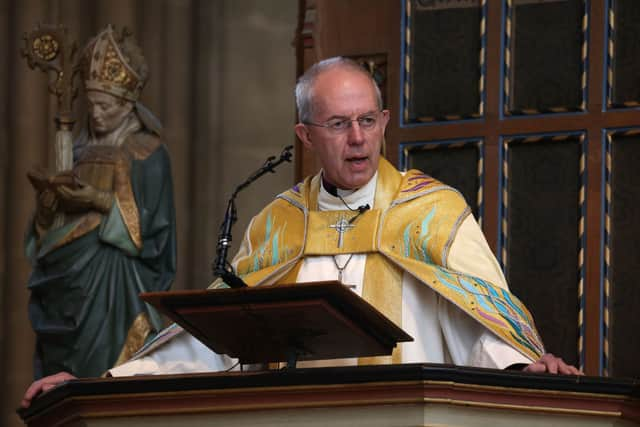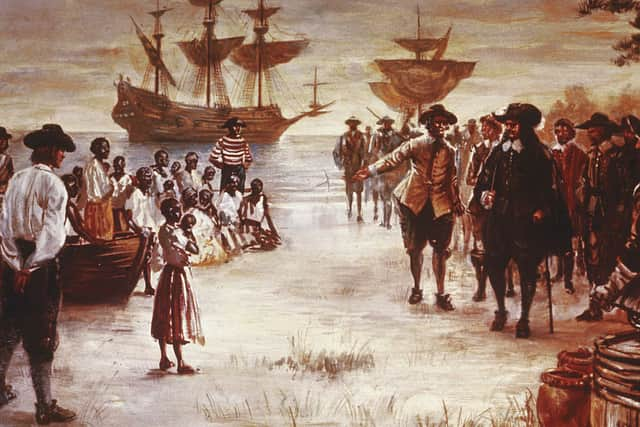Church of England: did church invest in the slave trade? Slavery links explained as £100m fund announced
and live on Freeview channel 276
The Church of England has pledged £100 million to “address past wrongs” after its investment fund was found to have historic links to slavery.
It comes after a report into the funds managed by the Church Commissioners found that a significant amount of the church’s wealth derived from investments in firms running the slave trade - worth potentially £724 million in today’s terms. Money also came from donations from key slave traders, such as Edward Colston, whose statue was torn down during Black Lives Matter protests in Bristol.
Advertisement
Hide AdAdvertisement
Hide AdJustin Welby, the Archbishop of Canterbury, said it was “time to address our shameful past” as the new fund was unveiled. But what exactly are the links between the church and the slave trade, what kind of profits were made, and what will the £100 million be used for? Here’s what the report revealed - and what’s been said about atonement plans.
What are the links between slavery and the Church of England?
In June 2022, the results from a report initiated by the Church Commissioners, the body that manages the Church of England’s £9 billion-plus endowment fund, were unveiled. The investigation had looked into how the church had benefited from the slave trade, specifically via Queen Anne’s Bounty, which was a financial scheme established in 1704. (In 1948, it became the Church Commissioners).
The report revealed that by 1777, Queen Anne’s Bounty had investments worth £406,942 (potentially equivalent to around £724 million in today’s terms) in the South Sea Company, which transported around 34,000 slaves “in crowded, unsanitary, unsafe and inhumane conditions” during its 30 years of operation.


Queen Anne’s Bounty also received numerous benefactions from individuals who profited from, or were closely linked to, transatlantic chattel slavery and the plantation economy. Edward Colston is one such example.
Advertisement
Hide AdAdvertisement
Hide Ad“The trade in enslaved African people was responsible for inflicting much pain and misery on people of African descent in particular but also on other groups around the world who have experienced deep injustices,” the report said. “It contributed to both the racial and class divisions and tensions we experience today in our society and, regrettably, in our church [the Church of England]. Churches and societies with such inequity and divisions do not flourish.”
Archbishop Welby said: “The full report lays bare the links of the Church Commissioners’ predecessor fund with transatlantic chattel slavery. I am deeply sorry for these links.”
What will the Church of England’s £100 million fund be used for?
The funding will be committed over the next nine years to a programme of investment, research, and engagement. According to the Church of England, it will be used to provide a “better and fairer future for all, particularly for communities affected by historic slavery”.
Individual dioceses, cathedrals and parishes will also be supported in researching and addressing their links with the slave trade, while any growth made on the fund will be spent on projects esigned to help communities adversely impacted by historic slavery.
Advertisement
Hide AdAdvertisement
Hide AdDeputy Chairman of the Church Commissioners and Bishop of Manchester, the Right Reverend Dr David Walker, said: “We will seek to address past wrongs by investing in a better future. We hope this will create a lasting positive legacy, serving and enabling communities impacted by slavery.”
Archbishop Welby admitted that the investment is a huge sum at a time when a huge sum at a time when parishes and congregations are struggling and resources ares stretched, but insisted it was “time to address our shameful past.” He added: “By acting rightly, we open ourselves to the blessings of God.”


What happens next?
The Church has vowed to keep probing its history. An exhibition will also go on display at the library of Lambeth Palace, the London home of the Archbishop of Canterbury.
It will feature the financial accounts of the Church alongside a letter written by a slave in Virginia in 1723. Addressed to the Archbishop, the letter begs for people of “mixed race” to be freed, pleading: “Release us out of this cruel bondage.”
Comment Guidelines
National World encourages reader discussion on our stories. User feedback, insights and back-and-forth exchanges add a rich layer of context to reporting. Please review our Community Guidelines before commenting.
